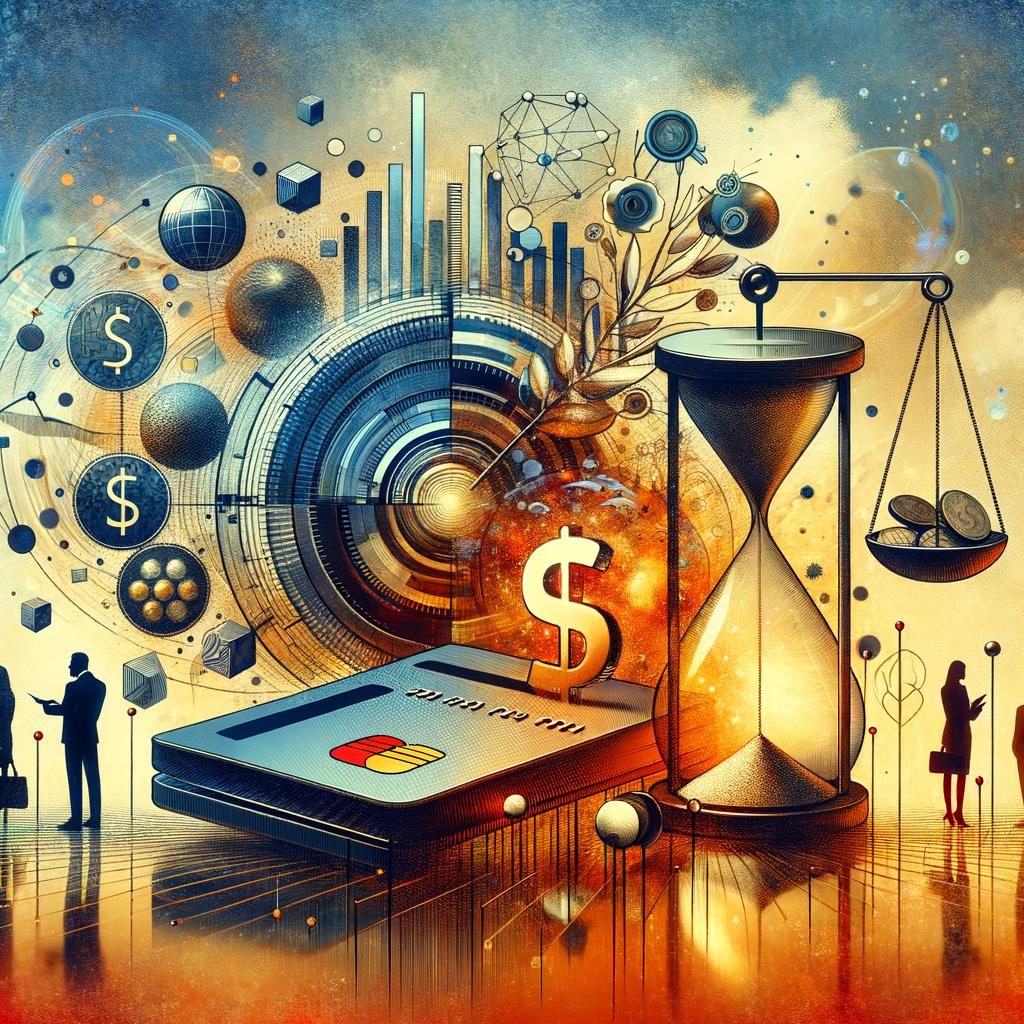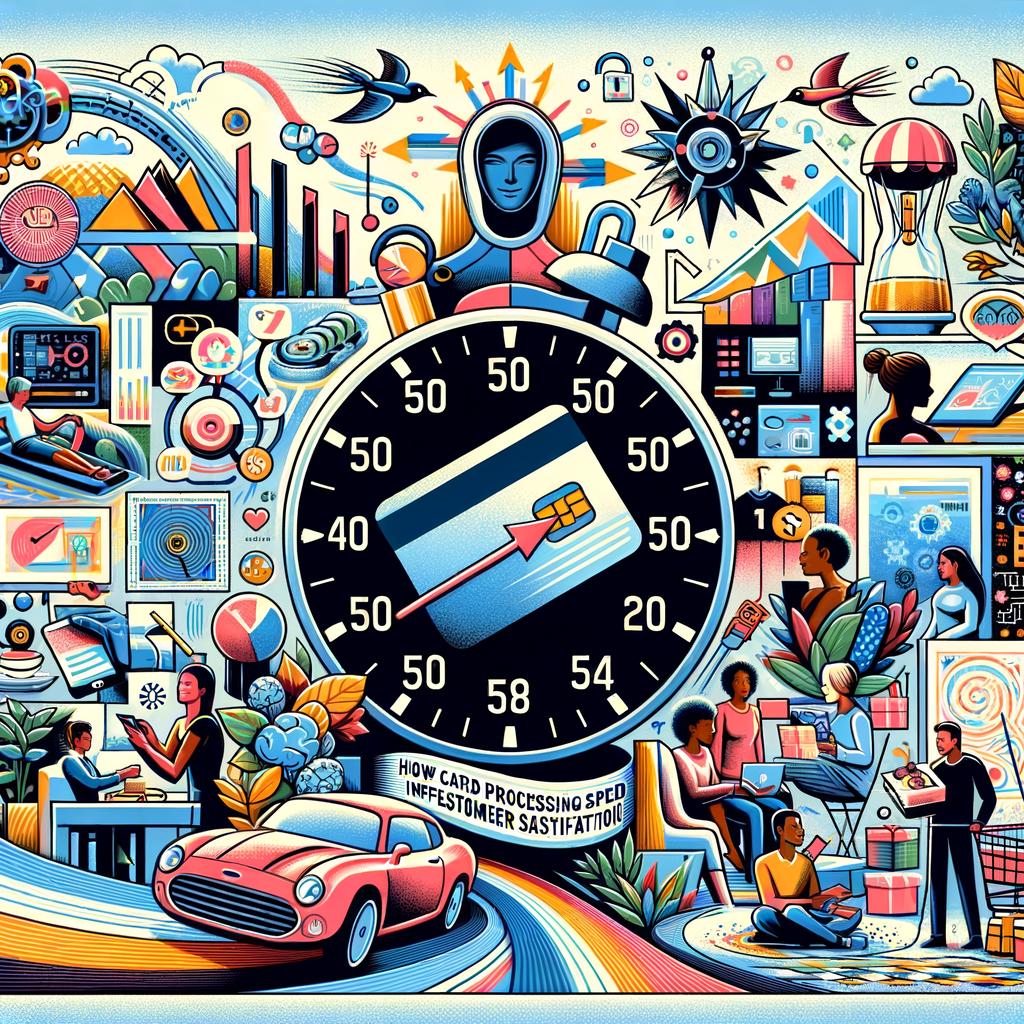Card Payments Industry Customer Experience and Trends
Card Payments Industry Customer Experience and Trends: How card processing affects customer experience, analysis of consumer trends, and adapting to changing consumer behaviours.
In a world where customization is king, it’s no surprise that consumers have come to expect personalization in every aspect of their lives, even when it comes to making payments. Gone are the days of one-size-fits-all approaches; today’s consumer wants a tailored experience that caters to their unique preferences and needs.
Personalization in payments is more than just a nice-to-have feature—it’s a necessity in order to stay competitive in the ever-evolving landscape of the digital economy. With advancements in technology and the rise of e-commerce, consumers now have more choices than ever before when it comes to how they make payments. From mobile wallets to contactless payments, the options are endless.
But with this abundance of choices comes a new set of challenges for businesses. How do you stand out in a sea of competitors vying for the attention of tech-savvy consumers? The answer lies in personalization. By tailoring the payment experience to meet the expectations of today’s consumer, businesses can create a more engaging and memorable relationship with their customers.
One way to achieve personalization in payments is through the use of data analytics. By analyzing consumer behavior and preferences, businesses can gain valuable insights into what drives their customers to make purchasing decisions. This data can then be used to create personalized payment options that cater to the individual needs of each customer. For example, offering a reward program that incentivizes customers to make repeat purchases or providing customized payment plans based on their spending habits.
Another key aspect of personalization in payments is the user experience. Today’s consumer expects a seamless and intuitive payment process that is easy to navigate and secure. By investing in user-friendly payment platforms and technologies, businesses can create a positive and hassle-free experience for their customers, increasing satisfaction and loyalty in the process.
Ultimately, personalization in payments is about putting the customer first. By understanding their preferences and offering tailored solutions that meet their expectations, businesses can create a more personalized and meaningful relationship with their customers. In a world where customization is king, personalization in payments is the key to unlocking success in today’s digital economy.
As we navigate through the digital age, it’s fascinating to see how different generations approach the topic of payment preferences. From baby boomers to Gen Z, each group has a unique perspective and set of priorities when it comes to how they choose to make payments.
Baby boomers, often known for their traditional values, tend to prefer more conventional methods of payment such as cash or checks. They value security and reliability, and may be wary of newer, more technologically advanced payment options. However, as they become more comfortable with technology, many are embracing online banking and mobile payment apps.
Generation X, sandwiched between the boomers and millennials, tends to be more diverse in their payment preferences. They appreciate convenience and efficiency, and are early adopters of new payment technologies. From credit cards to digital wallets, Gen Xers are open to a variety of options that make their lives easier.
Millennials, known for their tech-savvy ways, are leading the charge when it comes to mobile payments and peer-to-peer platforms. They value speed and convenience above all else, and are more likely to use services like Venmo or PayPal to split expenses and make quick transactions. With a strong emphasis on sustainability and social responsibility, many millennials also prefer to support businesses that offer environmentally friendly payment options.
Gen Z, the youngest generation to enter the workforce, is changing the game yet again. With a strong preference for digital and contactless payments, they are more likely to use apps like Apple Pay or Google Wallet. Gen Zers are also more likely to seek out businesses that offer cryptocurrency payment options, as they value innovation and are always looking for the next big thing.
In conclusion, understanding generational differences in payment preferences is crucial for businesses looking to cater to a wide range of customers. By recognizing the unique needs and priorities of each generation, companies can better tailor their payment options to meet the evolving demands of today’s consumers. Whether you’re a baby boomer still writing checks or a Gen Zer investing in Bitcoin, there’s a payment option out there for everyone.
As we dive deeper into the digital age, the concept of cashless transactions has become increasingly prevalent in our daily lives. From swiping a card at the grocery store to sending money through a mobile app, it seems like paper money is becoming a thing of the past. But what does this mean for the future of consumer adaptation?
As technology continues to advance at lightning speed, so too does the way we handle our money. Cashless transactions offer convenience, security, and efficiency like never before. With just a tap or a swipe, we can make purchases, transfer funds, and pay bills with ease. No more fumbling for loose change or worrying about lost or stolen cash – everything we need is right at our fingertips.
But with these advancements come challenges in consumer adaptation. Some may be hesitant to fully embrace this new way of handling money, citing concerns about privacy, security, and technological literacy. It can be daunting to navigate the ever-changing landscape of digital financial services, with new apps and payment methods constantly emerging.
However, as the world continues to shift towards a cashless society, it is vital for consumers to adapt and stay informed about the latest advancements in financial technology. Education and awareness will be key in helping individuals feel confident and secure in making the transition to cashless transactions.
The future of cashless transactions is bright, with more innovative solutions on the horizon. From contactless payments to digital wallets, the possibilities for streamlined and secure transactions are endless. By embracing these advancements and staying informed, consumers can be ready to navigate the ever-evolving world of digital finance with ease. So why not take the leap into a cashless future? Your wallet – and your future self – will thank you.
In today’s fast-paced world, convenience is key. With the rise of mobile payments, customers now have the power to make purchases with just a tap of their finger. But mobile payments are more than just a convenient way to pay for goods and services – they are revolutionizing the way businesses interact with their customers.
One of the biggest advantages of mobile payments is the enhanced customer experience they provide. Gone are the days of fumbling for cash or waiting in long lines to use a card machine. With mobile payments, customers can simply pull out their phone, scan a QR code, or use contactless payment to complete their transaction in seconds. This streamlined process not only saves time for customers, but also creates a seamless and efficient shopping experience.
Another way mobile payments enhance customer experience is through personalized offers and rewards. By using mobile payment apps, businesses can track customer spending habits and preferences, allowing them to tailor their offers to individual customers. This personalized approach not only makes customers feel valued, but also encourages them to return for future purchases.
Additionally, mobile payments offer a higher level of security compared to traditional payment methods. With features like fingerprint or facial recognition, customers can rest assured that their financial information is safe and secure. This peace of mind goes a long way in building trust and loyalty between businesses and their customers.
Overall, the role of mobile payments in enhancing customer experience cannot be understated. From convenience to security to personalized offerings, mobile payments are reshaping the way businesses engage with their customers. As more businesses adopt mobile payment systems, the future of customer experience is looking brighter than ever.
In a world where technology is constantly evolving, businesses are seeking ways to streamline the payment process for their users. Cross-platform payment integration is one such solution that has revolutionized the way consumers make transactions online. By allowing customers to seamlessly pay for goods and services across multiple platforms, companies are able to enhance the user experience and increase customer satisfaction.
Imagine this: You’re shopping online for a new pair of shoes. You find the perfect pair on your favorite retailer’s website, add them to your cart, and proceed to checkout. With cross-platform payment integration, you have the option to choose from a variety of payment methods, whether it be via credit card, PayPal, or even Apple Pay. Gone are the days of having to switch between different payment platforms to complete your purchase. Everything is integrated into one seamless process, making it easier than ever to make a payment.
But the benefits of cross-platform payment integration extend beyond just convenience. By offering users a variety of payment options, businesses are able to cater to a wider range of customers and attract new clientele. For example, some customers may prefer to pay with their credit card, while others may prefer to use a digital wallet like Venmo. By giving users the flexibility to choose their preferred method of payment, businesses can create a more personalized and user-friendly experience.
Furthermore, cross-platform payment integration also helps to increase security for both businesses and customers. With the rise of online payment fraud, it is more important than ever for companies to implement secure payment systems. By using a cross-platform payment integration solution, businesses can ensure that all transactions are encrypted and protected against potential threats. This not only gives customers peace of mind when making a purchase, but also helps to build trust and loyalty with the brand.
Overall, cross-platform payment integration has become a game-changer in the world of e-commerce. By offering a seamless and secure payment experience, businesses are able to enhance the user experience and drive sales. Whether you’re a customer looking to make a purchase or a business looking to improve your payment process, cross-platform payment integration is a trend that is here to stay. So next time you’re shopping online, remember to look out for this innovative feature and enjoy a hassle-free payment experience like never before.
In today’s fast-paced world, convenience is king. And nothing screams convenience quite like the rise of digital wallets. Gone are the days of fumbling through your purse or wallet for that pesky credit card – now, all you need is your trusty smartphone to make a purchase. But how exactly are digital wallets changing consumer shopping habits?
Picture this: you’re walking down the street, window shopping and admiring all the latest trends. Suddenly, you spot something that catches your eye. With just a few taps on your phone, you can now make that impulse buy without missing a beat. No need to worry about carrying cash or remembering your PIN code – it’s all right there at your fingertips.
But it’s not just about the convenience factor. Digital wallets are also changing the way we budget and track our spending. With features like real-time notifications and spending analytics, consumers can now keep a closer eye on their finances and make more informed purchasing decisions. No more overspending or impulse buys – digital wallets are putting the power back in the hands of the consumer.
And let’s not forget about the security aspect. With digital wallets, your sensitive financial information is encrypted and stored securely on your device, keeping it safe from prying eyes and potential hackers. Plus, many digital wallets offer added security features like biometric authentication and fraud protection, giving consumers peace of mind when making transactions online or in-store.
So, whether you’re a tech-savvy millennial or a seasoned shopper looking to simplify your life, digital wallets are changing the game when it comes to how we shop. With their convenience, budgeting tools, and security features, it’s no wonder more and more consumers are ditching their physical wallets in favor of their digital counterparts. Who knows what the future holds for digital wallets, but one thing’s for sure – they’re here to stay.
When it comes to online shopping, one of the key factors that determine whether a customer will make a purchase or not is the payment process. Imagine this: you spend hours browsing through different websites, adding items to your cart, and finally deciding on what you want to buy. But when it comes time to check out, the payment process is slow and clunky, with security measures that make you question whether your personal information is safe. Frustrated, you abandon your cart and close the browser window, taking your business elsewhere.
On the other hand, when the payment process is fast and secure, it can make a world of difference in customer trust. When you can complete your purchase with just a few clicks, knowing that your payment information is encrypted and protected, you are more likely to feel confident in making that transaction. This sense of security and efficiency can go a long way in building trust between customers and online retailers.
Fast and secure payment processes not only improve the overall shopping experience for customers, but they also have a direct impact on a business’s bottom line. Think about it: if customers are confident that their payment information is safe, they are more likely to make repeat purchases and recommend the online store to their friends and family. On the other hand, a slow and insecure payment process can lead to lost sales and damage to a company’s reputation.
In today’s digital age, where online shopping has become the norm, it is crucial for businesses to prioritize fast and secure payment processes in order to build and maintain customer trust. By investing in technology that streamlines the payment process and prioritizes security measures, businesses can not only attract more customers but also retain their loyalty in the long run. After all, trust is the foundation of any successful business relationship, and fast and secure payment processes are key in building and maintaining that trust.
In a world where convenience reigns supreme, it’s no surprise that digital payments are becoming increasingly popular among consumers. With the rise of online shopping, mobile apps, and contactless payments, businesses need to adapt to meet the growing preference for digital transactions.
So, how can businesses stay ahead of the game and cater to this new wave of payment preferences? It’s all about embracing technology and making the shift towards digital payment solutions. Whether you’re a small local retailer or a large multinational corporation, there are steps you can take to make the transition smoother for both your business and your customers.
First and foremost, consider offering a variety of digital payment options to give your customers more flexibility. From mobile wallets like Apple Pay and Google Pay to online payment platforms such as PayPal and Square, having a range of options ensures that you can cater to a wider audience. Additionally, integrating contactless payment methods like NFC technology or QR codes can make transactions faster and more efficient for both parties.
Another key aspect of adapting to digital payments is ensuring that your online payment process is secure and user-friendly. Customers want to feel confident that their financial information is safe when making online purchases, so investing in encryption technologies and fraud protection tools is crucial. Additionally, optimizing your checkout process for mobile devices can help reduce friction and streamline the payment experience for customers on-the-go.
Furthermore, consider implementing a loyalty program or rewards system that incentivizes customers to use digital payment methods. Whether it’s offering discounts, exclusive deals, or cashback rewards, giving customers an extra incentive to go digital can help drive adoption and loyalty.
Lastly, don’t underestimate the power of data analytics in understanding consumer behavior and preferences when it comes to digital payments. By tracking and analyzing customer transaction data, you can gain valuable insights into their spending habits and payment preferences, allowing you to tailor your offerings and marketing strategies accordingly.
In conclusion, the shift towards digital payments is not only inevitable but also beneficial for businesses looking to stay competitive in today’s fast-paced digital landscape. By embracing technology, offering a variety of payment options, prioritizing security, incentivizing customers, and leveraging data analytics, businesses can adapt to the growing preference for digital payments and create a seamless and convenient shopping experience for their customers.
When was the last time you swiped your card at a store and thought about the processing fees that were being charged behind the scenes? Probably never, right? But these fees can have a significant impact on customer decisions, whether they realize it or not.
Transparency around card processing fees is crucial for consumers to make informed decisions about their purchases. These fees are often hidden in the fine print or passed on to the customer through higher prices, making it difficult to truly understand the cost of using a card.
Imagine this scenario: you walk into your favorite boutique and find the perfect dress. You swipe your card and complete the transaction without a second thought. What you might not realize is that the boutique is paying a percentage of that sale in processing fees to the card network and the acquiring bank. In order to recoup these costs, the boutique may have to raise their prices, ultimately putting the burden back on the customer.
Now, let’s look at it from a different angle. If consumers were aware of the processing fees being charged, they might opt to pay with cash instead. By choosing cash, they would be saving the boutique money and potentially keeping prices lower for everyone. This transparency could lead to more conscious consumer decisions and ultimately drive down costs for everyone involved.
But the reality is that card processing fees are often shrouded in mystery, leaving customers in the dark about the true cost of using their cards. Without this transparency, it’s hard for consumers to factor in these fees when making purchasing decisions. This lack of awareness can lead to unintended consequences, such as higher prices or limited payment options.
In the end, it’s in everyone’s best interest to have more transparency around card processing fees. By shedding light on these costs, consumers can make better-informed decisions and potentially save money in the process. So next time you reach for your card at the checkout counter, take a moment to consider the hidden fees that might be impacting your purchase. It could make all the difference in the world.
Have you ever been in a rush to make a purchase only to be held up by a slow card processing machine? It’s frustrating, isn’t it? One minute you’re reaching for your card, ready to make the transaction and be on your way, and the next you’re stuck waiting for what feels like an eternity as the machine slowly processes your payment. In today’s fast-paced world, where time is of the essence and convenience is key, the speed at which a card is processed can make all the difference in customer satisfaction.
Picture this: you’re at your favorite coffee shop, eagerly anticipating your morning caffeine fix. You place your order, swipe your card, and then…nothing. The seconds tick by as the barista fumbles with the machine, trying to get it to process your payment. Your frustration grows as you watch the line behind you get longer and longer. Finally, after what feels like an eternity, the transaction goes through, and you can finally grab your coffee and go. But the experience has left a sour taste in your mouth, and you can’t help but think twice about returning to that coffee shop in the future.
Now, imagine the opposite scenario: you’re at a different coffee shop, one that has lightning-fast card processing speeds. You swipe your card, and in the blink of an eye, the transaction is complete. You grab your coffee, smile at the efficiency of the process, and walk out the door feeling satisfied and impressed with the service you received. That quick and seamless transaction has left you with a positive impression of the coffee shop, making you more likely to return in the future.
In today’s digital age, where everything moves at the speed of light, customers expect transactions to be quick and effortless. Slow card processing speeds can not only frustrate customers but also reflect poorly on a business’s efficiency and professionalism. On the other hand, fast processing speeds can enhance the overall customer experience, leaving a lasting impression that can lead to repeat business and positive word-of-mouth referrals.
So, the next time you find yourself waiting for a card to process, take a moment to reflect on how the speed of that transaction influences your satisfaction as a customer. And if you’re a business owner, consider investing in technology that can streamline your card processing speeds and enhance the overall experience for your customers. After all, in today’s fast-paced world, time is money – and a quick card transaction can make all the difference in keeping your customers happy and coming back for more.











